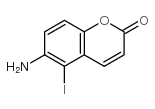A dual role for poly-ADP-ribosylation in spatial memory acquisition after traumatic brain injury in mice involving NAD+ depletion and ribosylation of 14-3-3gamma.
Margaret A Satchell, Xiaopeng Zhang, Patrick M Kochanek, C Edward Dixon, Larry W Jenkins, John Melick, Csaba Szabó, Robert S B Clark
Index: J. Neurochem. 85(3) , 697-708, (2003)
Full Text: HTML
Abstract
Poly(ADP-ribose) polymerase-1 (PARP-1) is a homeostatic enzyme that paradoxically contributes to disturbances in spatial memory acquisition after traumatic brain injury (TBI) in transgenic mice, thought to be related to depletion of its substrate nicotinamide adenine dinucleotide (NAD+). In this study, systemic administration of the PARP-1 inhibitor 5-iodo-6-amino-1,2-benzopyrone (INH2BP) after TBI preserved brain NAD+ levels and dose-dependently reduced poly-ADP-ribosylation 24 h after injury. While moderate-dose INH2BP improved spatial memory acquisition after TBI; strikingly, both injured- and sham-mice receiving high-dose INH2BP were unable to learn in the Morris-water maze. Poly-ADP-ribosylated peptides identified using a proteomics approach yielded several proteins potentially associated with memory, including structural proteins (tubulin alpha and beta, gamma-actin, and alpha-internexin neuronal intermediate filament protein) and 14-3-3gamma. Nuclear poly-ADP-ribosylation of 14-3-3gamma was completely inhibited by the dose of INH2BP that produced profound memory disturbances. Thus, partial inhibition of poly-ADP-ribosylation preserves NAD+ and improves functional outcome after TBI, whereas more complete inhibition impairs spatial memory acquisition independent of injury, and is associated with ribosylation of 14-3-3gamma.
Related Compounds
| Structure | Name/CAS No. | Molecular Formula | Articles |
|---|---|---|---|
 |
INH2BP
CAS:137881-27-7 |
C9H6INO2 |
|
The Protective Effect of INH2BP, a Novel PARP Inhibitor 5-Io...
2015-01-01 [Pharmacology 96 , 259-70, (2015)] |
|
4-Hydroxynonenal induces apoptosis in human osteoarthritic c...
2008-01-01 [Arthritis. Res. Ther. 10 , R107, (2008)] |
|
Dichloroacetate enhances apoptotic cell death via oxidative ...
2014-10-01 [Breast Cancer Res. Treat. 147(3) , 539-50, (2014)] |
|
Inhibition of poly (ADP-ribose) synthetase by gene disruptio...
2001-07-01 [Br. J. Pharmacol. 133(6) , 909-19, (2001)] |
|
Protection against peroxynitrite-induced fibroblast injury a...
1998-03-31 [Proc. Natl. Acad. Sci. U. S. A. 95(7) , 3867-72, (1998)] |